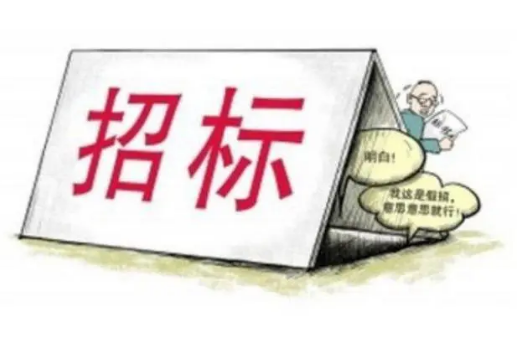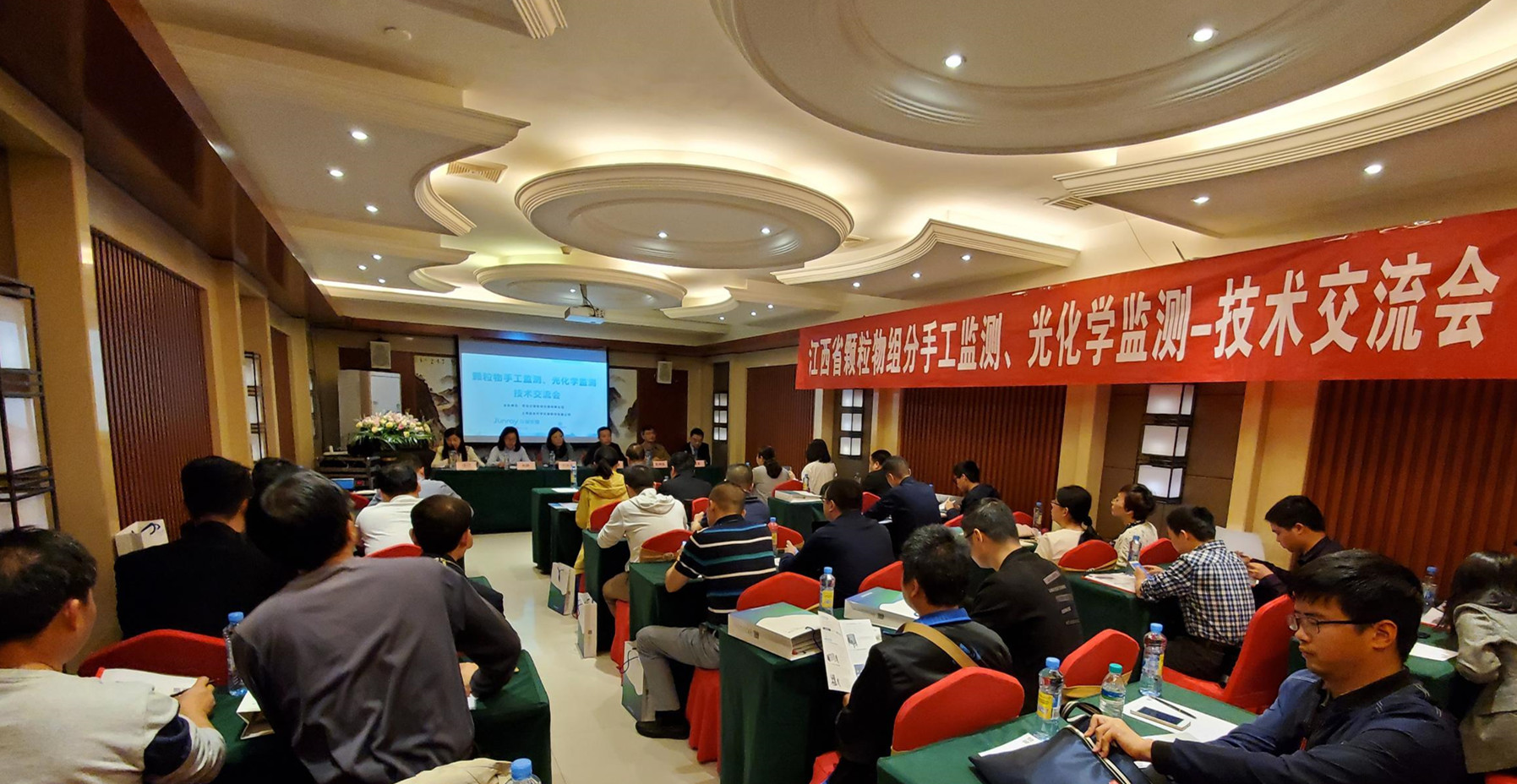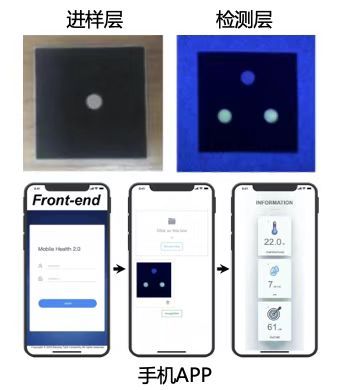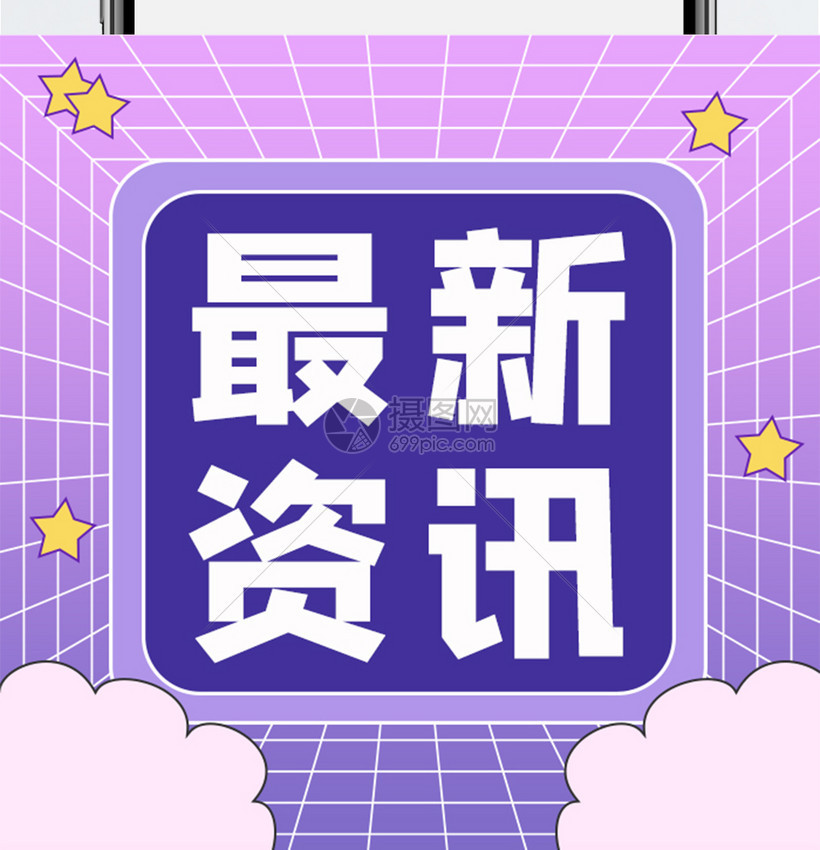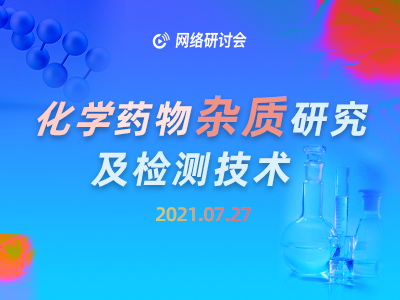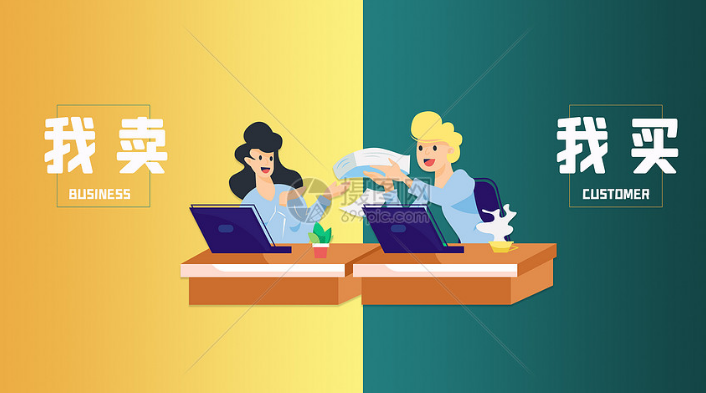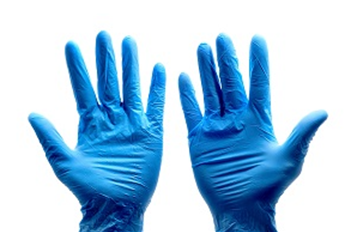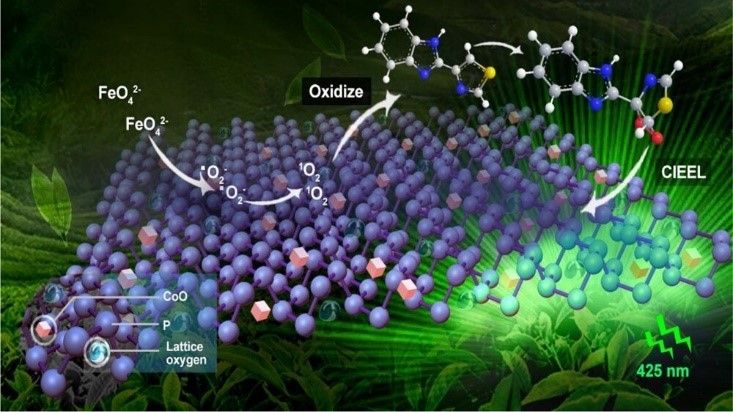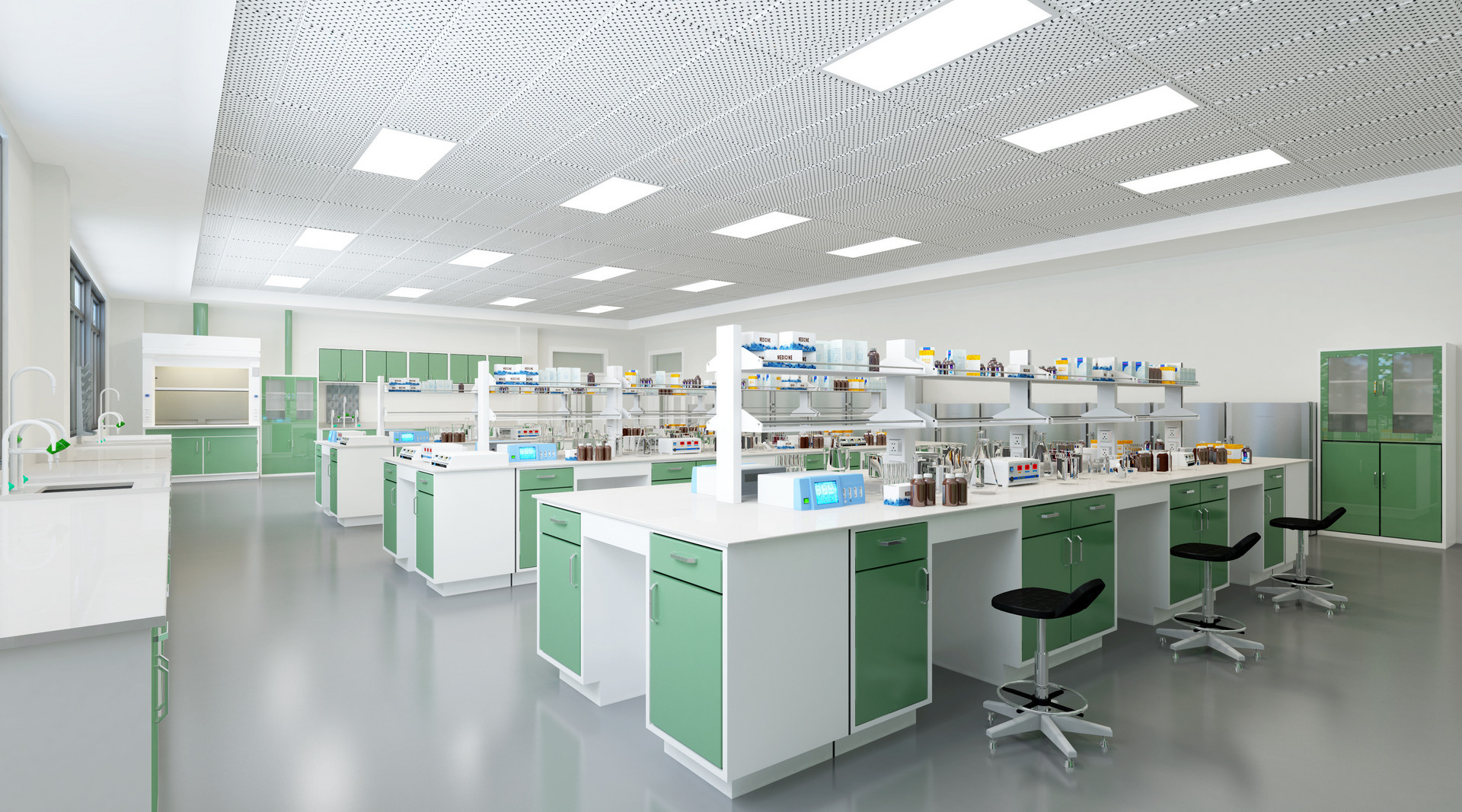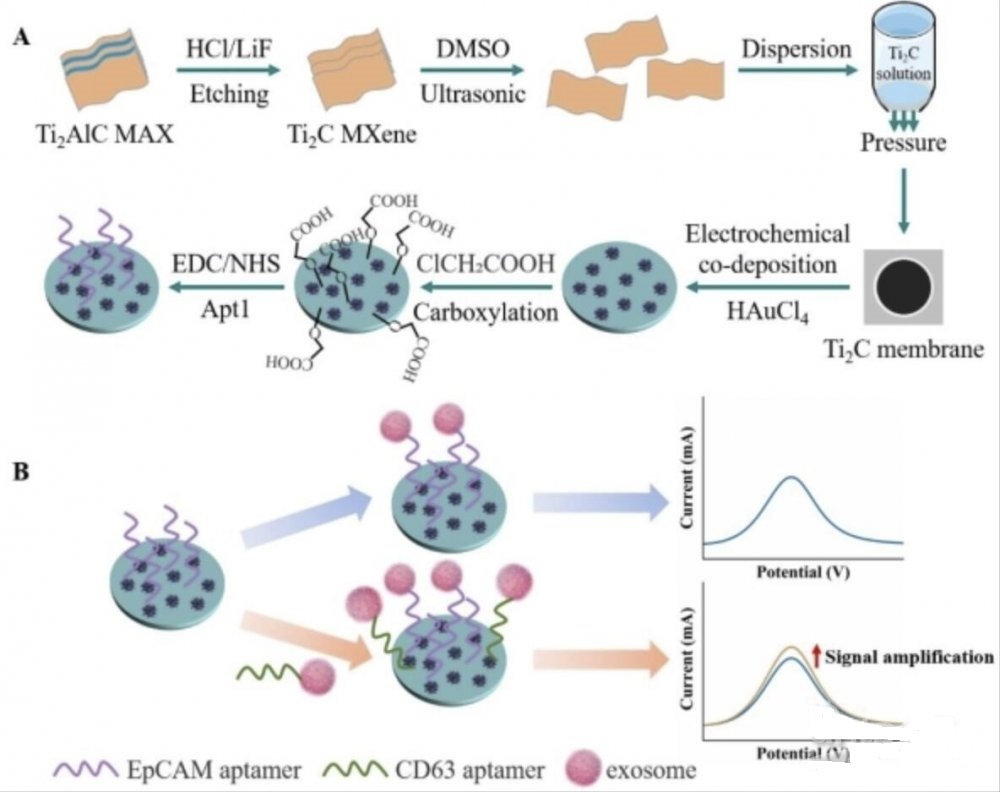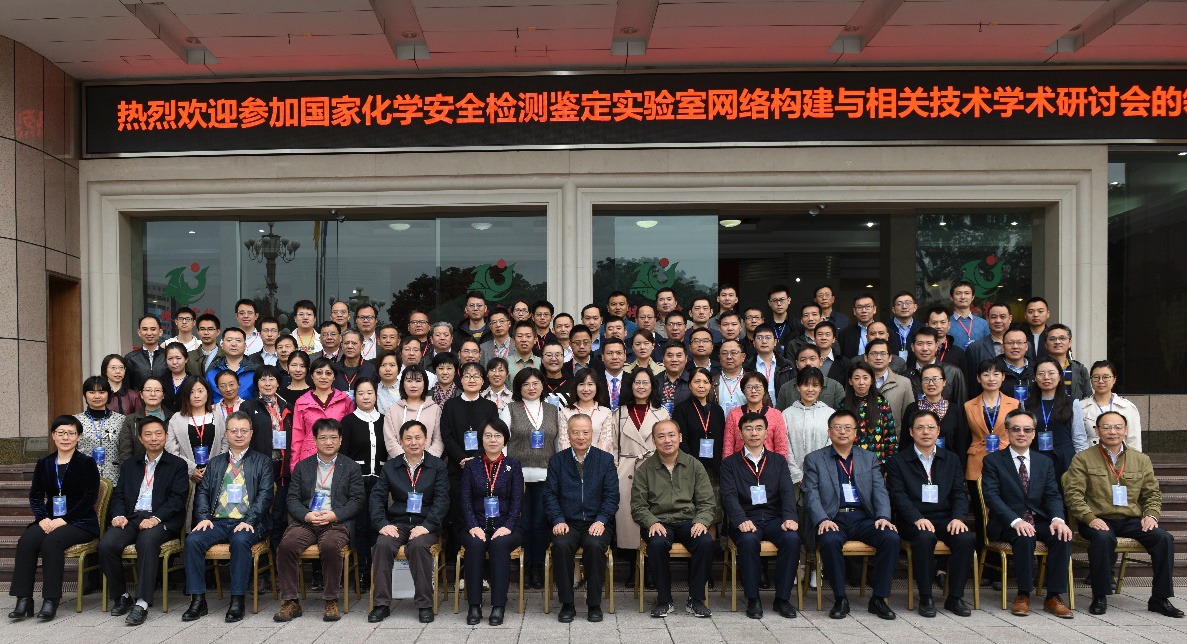BCEIA 2017工业品分析论坛——化学品、农药、冶金检测新高度
p style=" text-align: center text-indent: 0em margin-top: 10px line-height: 1.5em margin-bottom: 5px " & nbsp & nbsp & nbsp img src=" http://img1.17img.cn/17img/images/201710/wycimg/5a899b07-3537-46bb-8ead-125c568edb41.jpg" title=" 3.jpg" style=" width: 500px height: 333px " width=" 500" vspace=" 0" border=" 0" hspace=" 0" height=" 333" / /p p style=" text-align: left text-indent: 0em margin-top: 10px line-height: 1.5em margin-bottom: 5px " strong & nbsp & nbsp & nbsp & nbsp & nbsp & nbsp 我要测网讯& nbsp /strong 10月9日,第十七届北京分析测试学术报告会暨展览会(BCEIA 2017)学术报告会在北京国家会议中心盛大开幕。11日上午,2017中国工业品分析检测技术学术论坛顺利召开,中国化工信息中心副主任揭玉斌主持会议,中国分析测试协会科技委委员吴波尔致辞,4位专家就工业品分析技术及对分析仪器的要求作精彩报告。 /p p style=" text-align: center text-indent: 0em margin-top: 10px line-height: 1.5em margin-bottom: 5px " img src=" http://img1.17img.cn/17img/images/201710/wycimg/83b58a3e-b90c-4359-95ed-893a5dd5d753.jpg" title=" 1.jpg" style=" width: 500px height: 355px " width=" 500" vspace=" 0" border=" 0" hspace=" 0" height=" 355" / /p p style=" text-align: center text-indent: 0em margin-top: 10px line-height: 1.5em margin-bottom: 5px " span style=" font-size: 14px color: rgb(0, 112, 192) " 中国化工信息中心副主任 揭玉斌 /span /p p style=" text-indent: 0em text-align: center margin-top: 10px line-height: 1.5em margin-bottom: 5px " span style=" font-size: 14px color: rgb(0, 112, 192) " img src=" http://img1.17img.cn/17img/images/201710/wycimg/505a4c1b-e3df-46ce-8f3b-72c0ce20f509.jpg" title=" 2.jpg" style=" width: 500px height: 357px " width=" 500" vspace=" 0" border=" 0" hspace=" 0" height=" 357" / /span /p p style=" text-align: center text-indent: 0em margin-top: 10px line-height: 1.5em margin-bottom: 5px " span style=" font-size: 14px color: rgb(0, 112, 192) " 中国分析测试协会科技委委员 吴波尔 br/ /span /p p style=" text-indent: 0em text-align: center margin-top: 10px line-height: 1.5em margin-bottom: 5px " span style=" font-size: 14px color: rgb(0, 112, 192) " img src=" http://img1.17img.cn/17img/images/201710/wycimg/321d313e-93e8-4d2f-9b7d-f749003a9816.jpg" title=" 4.jpg" style=" width: 500px height: 333px " width=" 500" vspace=" 0" border=" 0" hspace=" 0" height=" 333" / /span /p p style=" text-align: center text-indent: 0em margin-top: 10px line-height: 1.5em margin-bottom: 5px " span style=" font-size: 14px color: rgb(0, 112, 192) " 中国检验检疫科学研究院副所长 李海山 /span /p p style=" text-align: center text-indent: 0em margin-top: 10px line-height: 1.5em margin-bottom: 5px " span style=" font-size: 14px color: rgb(0, 112, 192) " 报告题目:健康毒理学试验技术及对分析仪器的要求 /span /p p style=" text-align: left text-indent: 0em margin-top: 10px line-height: 1.5em margin-bottom: 5px " & nbsp & nbsp & nbsp & nbsp & nbsp & nbsp 近年来,发达国家对非动物试验替代方法的研发发展快速,李海山先后介绍了健康毒理学传统试验技术、新试验技术及对分析仪器的要求。在毒理学试验中,供试品浓度一般较高,气相色谱、液相色谱即可满足需求;药物在生物样本浓度很低,通常需要高精度分析仪器,尤其毒代物动力学中代谢物转化分析对仪器的要求更高。在吸入暴露浓度监测方面已经实现了血液和尿液自动采集、储存、在线监测,同时肺功能监测与暴露监测结合,也可以实现在线监测。特别指出,对于鼠伤寒沙门氏菌回复突变实验国内已经优先研发出自动试验操作仪器,提高了试验效率。 /p p style=" text-align: center text-indent: 0em margin-top: 10px line-height: 1.5em margin-bottom: 5px " img src=" http://img1.17img.cn/17img/images/201710/wycimg/19fe3567-52be-41e3-a7df-0dc6df243c59.jpg" title=" 5.jpg" style=" width: 500px height: 333px " width=" 500" vspace=" 0" border=" 0" hspace=" 0" height=" 333" / /p p style=" text-align: center text-indent: 0em margin-top: 10px line-height: 1.5em margin-bottom: 5px " span style=" font-size: 14px color: rgb(0, 112, 192) " 环境保护部南京环境科学研究所 吴晟旻 /span /p p style=" text-align: center text-indent: 0em margin-top: 10px line-height: 1.5em margin-bottom: 5px " span style=" font-size: 14px color: rgb(0, 112, 192) " 报告题目:生态毒理学试验技术及分析仪器的要求 /span /p p style=" text-indent: 0em margin-top: 10px line-height: 1.5em margin-bottom: 5px " & nbsp & nbsp & nbsp & nbsp & nbsp & nbsp 吴晟旻就特殊化学物质生态毒理测试技术及其分析仪器选择方法作报告。他指出,特殊物质包括UVCB类、无机物、聚合物、纳米材料、塑料微颗粒以及有机物,UVCB物质难以定义精确的暴露浓度,分析测试较难;有些金属无机物溶解度低,难以测定环境介质中的暴露浓度;聚合物在水中溶解很低,常伴有絮凝作用,没有灵敏度较高的分析测定方法;纳米材料粒径小,比表面积大,水中分散、团聚沉降等性质受到PH、离子强度的影响大难以定量;塑料微颗粒目前还没有很好的定量检测方法,主要采用显微计数法;有机物性质多样,暴露体系难以制备、难以建立合适的分析方法。 br/ & nbsp & nbsp & nbsp & nbsp & nbsp & nbsp 吴晟旻介绍了具有光解性、易挥发性、水解性、疏水性、难溶性特殊物质、纳米材料、塑料微颗粒溶液制备方法,鱼类及其胚胎在毒理试验中的形态变化,常用气相、液相、ICP-MS等分析测试方法与其适用对象。对于碳元素较多的大分子物质,利用现有的色谱和质谱方法都不能进行分析时,选择采用总有机碳方法。目前,金属纳米材料分析困难,通常采用SP-ICP-MS与透射电镜结合共同分析。特殊物质检测应该根据其物化性质选择合适的溶剂,调节PH,结合代谢产物的特性等选择检测仪器。 /p p style=" text-indent: 0em text-align: center margin-top: 10px line-height: 1.5em margin-bottom: 5px " img src=" http://img1.17img.cn/17img/images/201710/wycimg/bab4fb54-219e-40a1-9a52-f1bc391f18ce.jpg" title=" 6.jpg" style=" width: 500px height: 333px " width=" 500" vspace=" 0" border=" 0" hspace=" 0" height=" 333" / /p p style=" text-indent: 0em text-align: center margin-top: 10px line-height: 1.5em margin-bottom: 5px " span style=" font-size: 14px color: rgb(0, 112, 192) " 中国化工信息中心中国项目总监 钟立香 /span /p p style=" text-indent: 0em text-align: center margin-top: 10px line-height: 1.5em margin-bottom: 5px " span style=" font-size: 14px color: rgb(0, 112, 192) " 报告题目:工业品产品注册相关检测项目及要求 /span /p p style=" text-indent: 0em margin-top: 10px line-height: 1.5em margin-bottom: 5px " & nbsp & nbsp & nbsp & nbsp & nbsp & nbsp 钟立香首先介绍了化学品申报法规背景。1994年5月1日,《化学品首次进口及有毒化学品进出口环境管理规定》要求进口企业对首次进口到中国的化学品进行申报登记,不需要提交测试数据;2003年10月15日,环保总局17号令《新化学物质环境管理办法》要求不在“现有物质名录”中生产或者进口均需要办理申报登记手续,需要提交测试数据;2010年10月15日,环保部7号令《新化学物质环境管理办法》更新,规定对新化学物质实施风险和分类登记,对登记后实际生产或者进口的物质实施分类管理,对实际活动的登记物质实施回顾性评估进入名录。& nbsp 今年八月,环保部调整了《新化学物质申报登记指南》数据要求,并于2017年10月15日实施。 br/ & nbsp & nbsp & nbsp & nbsp & nbsp & nbsp 2016年,环保部发布《关于规范化学品测试机构管理的公告》,规定为新化学物质申报目的提供测试数据的境内测试机构,应当依法通过资质认定,从事新化学物质生态毒理学特性测试的机构应当符合良好实验室规范(GLP),从事新化学物质理化性质、毒理学特性测试的机构应当符合《危险化学品安全管理条例》等相关法律法规的要求。目前,国务院安全生产监督管理部门认可的化学品物理危险性鉴定机构有11家,国务院卫生主管部门认可的毒理特性鉴定机构有24家,化学品环境危害性由国务院环境保护主管部门认可的专业机构进行鉴定。 br/ & nbsp & nbsp & nbsp & nbsp & nbsp & nbsp 钟立香还介绍了化学品申报和农药登记测试机构的要求。境内测试机构应按照《办法》第十九条要求,按化学品测试导则或者化学品测试相关国家标准规定的方法开展新化学物质申报测试;境外测试机构应按照方法一致性的原则,采用OECD化学品测试导则或者其他国家普遍承认的方法为新化学物质申报开展测试。境内实验室农药药效、残留、环境登记实验应当在中国境内完成,并且由农业部认定的登记试验单位出具报告;境外实验室由与中国政府有关部门签署互认协定的境外相关实验室出具报告。 /p p style=" text-indent: 0em text-align: center margin-top: 10px line-height: 1.5em margin-bottom: 5px " img src=" http://img1.17img.cn/17img/images/201710/wycimg/79b2a054-6547-4ae2-bb8c-25f4db6453c7.jpg" title=" 7.jpg" style=" width: 500px height: 355px " width=" 500" vspace=" 0" border=" 0" hspace=" 0" height=" 355" / /p p style=" text-align: center text-indent: 0em margin-top: 10px line-height: 1.5em margin-bottom: 5px " span style=" font-size: 14px color: rgb(0, 112, 192) " 国家建筑钢材质量监督检验中心 李晓滨 /span /p p style=" text-indent: 0em margin-top: 10px line-height: 1.5em margin-bottom: 5px text-align: center " span style=" font-size: 14px color: rgb(0, 112, 192) " 报告题目:冶金检测技术前沿及对实验仪器要求 /span /p p style=" text-indent: 0em margin-top: 10px line-height: 1.5em margin-bottom: 5px text-align: left " & nbsp & nbsp & nbsp & nbsp & nbsp 冶金产品是涉及经济、社会发展和人民生命财产安全的重要产品,冶金的发展离不开相应检测技术支持。李晓滨介绍了冶金生产过程中的检测和冶金产品化学、力学、无损、腐蚀、失效等检测技术,并且指出冶金检测技术的发展趋势:1、质量在线检测技术,包括过程质量检测和成品质量检测;2、体视学、图像检测技术,包括光学技术、电脑软硬件技术、模式识别及数据处理技术;3、智能化、自动化仪器分析技术,包括热分析技术、表面分析技术、结构与物像分析技术、微区成分分析技术;4、产品应用检测分析技术,包括装配式结构钢筋节点的机械连接检测技术、海洋环境中混凝土结构钢筋腐蚀速率的比对检测技术。同时,李晓滨根据冶金检测特点,针对国家对实验室的新要求,对相关要求进行梳理。 /p p style=" text-indent: 0em margin-top: 10px line-height: 1.5em margin-bottom: 5px text-align: left " & nbsp & nbsp & nbsp & nbsp BCEIA精彩活动仍在继续,更多现场快讯,敬请关注仪器信息网(展位号:42091) /p p style=" text-indent: 0em margin-top: 10px line-height: 1.5em margin-bottom: 5px text-align: right " 撰稿编辑:徐娜娜 br/ /p p br/ /p

